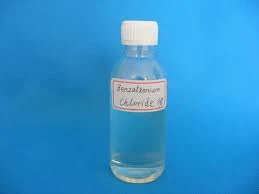flocculant vs coagulant
Understanding the Difference Between Flocculants and Coagulants
In water treatment processes, the terms flocculant and coagulant are often encountered. While they may seem interchangeable at first glance, they serve distinct purposes and play unique roles in clarifying water. Understanding the differences between these two chemical agents is essential for effectively managing water quality in various industrial and municipal applications.
What are Coagulants?
Coagulants are chemicals that promote the clumping of small particles suspended in water. The primary purpose of coagulants is to neutralize the charges on these particles, allowing them to come together and form larger aggregates, or flocs. Common coagulants include aluminum sulfate (alum), ferric chloride, and polyaluminum chloride.
The coagulation process typically includes several steps. Initially, the coagulant is added to the water, where it interacts with the suspended particles. This interaction helps to destabilize the particles by neutralizing their electric charges. Once destabilized, these particles can begin to bond with one another, forming larger aggregates that can be more easily removed from the water through subsequent filtration or sedimentation.
What are Flocculants?
Flocculants, on the other hand, are substances that promote the agglomeration of particles after they have been destabilized by coagulants. They work by bridging the spaces between particles, allowing them to come together into larger flocs. This process is also known as flocculation. Flocculants are often high-molecular-weight organic polymers, such as polyacrylamide and polyethylene oxide.
flocculant vs coagulant

The flocculation process is typically characterized by gentle mixing, allowing the larger flocs to form without breaking apart. This step is crucial as it increases the efficiency of the sedimentation or filtration processes that follow. The resulting larger flocs can be easily removed from the water, resulting in clearer and cleaner water.
The Interplay Between Coagulants and Flocculants
In many water treatment scenarios, coagulants and flocculants are used in tandem to achieve optimal results. The sequence typically starts with the addition of a coagulant to stabilize the suspended particles, followed by the addition of a flocculant. This combination increases the efficiency of the overall treatment process, allowing for quicker and more effective removal of impurities from water.
It’s important to note that the choice between using a coagulant or a flocculant depends on several factors, including the characteristics of the water being treated and the specific contaminants present. For instance, certain waters may require a stronger coagulant due to high levels of turbidity, while others may benefit more from the aggregation properties of a flocculant.
Conclusion
In summary, coagulants and flocculants are vital components of the water treatment process, each serving its own unique function. Coagulants work to destabilize and aggregate particles, while flocculants facilitate the formation of larger flocs that can be removed from water more effectively. Understanding the interplay between these two agents can aid engineers and operators in optimizing treatment processes, ensuring cleaner and safer water for various applications.
-
lk-319-special-scale-and-corrosion-inhibitor-for-steel-plants-advanced-solutions-for-industrial-water-systemsNewsAug.22,2025
-
flocculant-water-treatment-essential-chemical-solutions-for-purification-processesNewsAug.22,2025
-
isothiazolinones-versatile-microbial-control-agents-for-industrial-and-consumer-applicationsNewsAug.22,2025
-
scale-inhibitor-key-solutions-for-water-system-scale-preventionNewsAug.22,2025
-
organophosphonates-versatile-scale-inhibitors-for-industrial-water-systemsNewsAug.22,2025
-
scale-and-corrosion-inhibitor-essential-chemical-solutions-for-water-system-maintenanceNewsAug.22,2025





